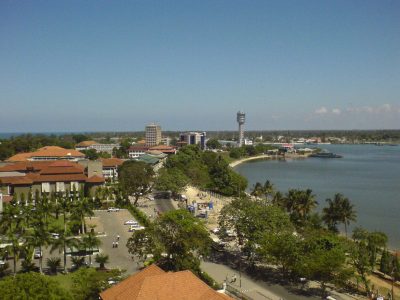Kenya’s KenGen to focus on geothermal, seeking US$ 5 billion
KenGen, is seeking a total of US$5 billion over the next 10 years to develop the largely untapped geothermal potential in east Africa's biggest economy to boost power supply.
Reported by Reuters, Kenya’s leading power producer, KenGen, is seeking a total of US$5 billion over the next 10 years to develop the largely untapped geothermal potential in east Africa’s biggest economy to boost power supply.
See also earlier post on Kenya’s Geothermal Development Corp. (GDC). “GDC is a special purpose company that will focus on upstream geothermal activities of exploration, field development, drilling and upstream supply. “Once the steam is ready, it will be offered to KenGen by the independent power producers (IPPs) at nominal rates for conversion to electricity.” So basically the steam development, drilling etc is going to be done by GDC, the rest of the development for power generation is then being taken on by KenGen.
Kenya Electricity Generating Company (KenGen) (KEGN1.NR), which generates about 80 percent of the country’s power mainly from hydro sources, says tapping geothermal power is now the main focus in advancing Kenya’s electricity generation. Only about 18 percent of Kenyans have electricity in their homes, in a country of 36 million people.
Eddy Njoroge, KenGen’s managing director, said the company wants to spend the money to generate a total of 2,000 MW over 10 years, with 500 MW of that expected within 5 years.
He said Kenya has a 3,000 MW potential for geothermal power. It is currently exploiting about 200 MW.
Despite the global credit crunch, the company was hopeful it could raise the cash over time through various sources, including development agencies, banks and bonds, Njoroge said. “Geothermal is the new thrust in our power generation strategy,” Njoroge told Reuters on the sidelines of an Africa power conference in Johannesburg.
“It is not subject to the vagaries of weather changes such as hydro, and the volatility of oil prices such as gas.” Although cheap and renewable, the start up cost for geothermal is expensive compared with other sources of power.
“It costs $6 million to drill a well into the earth, and there is a risk that one may fail to find steam,” Njoroge said. Several wells are required to generate sufficient power.
“We have not focused on geothermal in the past because it is very expensive up-front. In the long run it is a cheaper option, because there is no fuel cost to keep it running, and it is a renewable source of energy,” Njoroge said.
Electricity demand in Kenya is forecast to surge from 1,050 MW now to 1,500 MW by 2012, 3,000 MW by 2018 and 9,000 MW by 2030, in line with growth of the economy and population.
Njoroge said Kenya’s focus on geothermal would compliment plans to integrate national grids in the region, to form a power pool to trade electricity, including Uganda and Tanzania.
>An Overview of Geothermal Development in Kenya (PDF, source: Iceida)<
Source: Reuters











